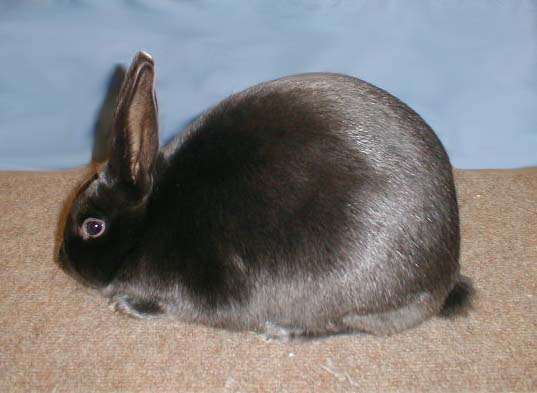Type the name of the breed you're looking for below
[wpdreams_ajaxsearchlite] Don't see the breed your're looking for? Click here and let us know!
Breed Characteristics
1 paw - breed exhibits the least amount of this characteristic
5 paws - breed exhibits most amount of this characteristic
Satin rabbit
| Origin | The satin gene first appeared in a litter of Havanas born in the Indiana rabbitry of Mr. Walter Huey. In an effort to improve his Havanas, Mr. Huey had started inbreeding them, causing carriers of the new mutation to be bred to one another and produce offspring that showed the trait. At first, Huey showed his new bunnies against the regular Havanas, but other breeders didn’t find that fair. Eventually the American Federation of Havana Breeders decided to sponsor “Satin Havanas” as their own breed. Through the dedicated efforts of many, Satins were bred up in size to commercial weight and eventually recognized by the ARBA in 1956. The first colour accepted was Siamese, but others followed quickly. Satin coats have since been put on a number of other breeds: the Mini Satin, the Satin Angora, the Satin Dwarf of Europe, and the Mini Satin Rex of Australia or New Zealand. Today the Satin is an excellent multipurpose rabbit. Its large size and commercial type makes it well-suited to market pen classes, as well as producing meat for the family table. As a show animal, the Satin is very competitive. And if you’d like a bunny that feels like silk and shines like a gemstone in the sunshine, this is the breed for you. |
Physical Attributes
| Weight | 8 - 11 lbs. (3.6 - 5 kg) |
| Ear Type | Erect |
| Fur Type | Satin |
| Colours | Black, blue, broken group, Californian, chinchilla, chocolate, copper, red, Siamese and white. |
| Appearance | The body is medium-long and erect. |
| Other Considerations | Life Expectancy: 5 - 8 years Temperament: Gentle |
| Best Kept In | Pen. Cage or Yard. |



